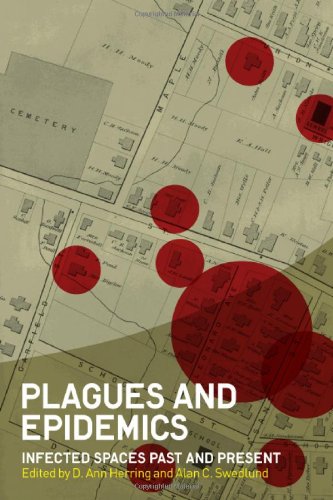

Most ebook files are in PDF format, so you can easily read them using various software such as Foxit Reader or directly on the Google Chrome browser.
Some ebook files are released by publishers in other formats such as .awz, .mobi, .epub, .fb2, etc. You may need to install specific software to read these formats on mobile/PC, such as Calibre.
Please read the tutorial at this link. https://ebooknice.com/page/post?id=faq
We offer FREE conversion to the popular formats you request; however, this may take some time. Therefore, right after payment, please email us, and we will try to provide the service as quickly as possible.
For some exceptional file formats or broken links (if any), please refrain from opening any disputes. Instead, email us first, and we will try to assist within a maximum of 6 hours.
EbookNice Team

Status:
Available0.0
0 reviews
ISBN-10 : 1000181555
ISBN-13 : 9781000181555
Author: Ann Herring, Alan C. Swedlund
Until recently, plagues were thought to belong in the ancient past. Now there are deep worries about global pandemics. This book presents views from anthropology about this much publicized and complex problem. The authors take us to places where epidemics are erupting, waning, or gone, and to other places where they have not yet arrived, but where a frightening story line is already in place. They explore public health bureaucracies and political arenas where the power lies to make decisions about what is, and is not, an epidemic. They look back into global history to uncover disease trends and look ahead to a future of expanding plagues within the context of climate change. The chapters are written from a range of perspectives, from the science of modeling epidemics to the social science of understanding them. Patterns emerge when people are engulfed by diseases labeled as epidemics but which have the hallmarks of plague. There are cycles of shame and blame, stigma, isolation of the sick, fear of contagion, and end-of-the-world scenarios. Plague, it would seem, is still among us.
1 Plagues and Epidemics in Anthropological Perspective
2 Ecosyndemics: Global Warming and the Coming Plagues of the Twenty-first Century
3 Pressing Plagues: On the Mediated Communicability of Virtual Epidemics
4 On Creating Epidemics, Plagues, and Other Wartime Alarums and Excursions: Enumerating versus Estimating Civilian Mortality in Iraq
5 Avian Influenza and the Third Epidemiological Transition
6 Deconstructing an Epidemic: Cholera in Gibraltar
7 The End of a Plague? Tuberculosis in New Zealand
8 Epidemics and Time: Influenza and Tuberculosis during and after the 1918-1919 Pandemic
9 Everyday Mortality in the Time of Plague: Ordinary People in Massachusetts before and during the 1918 Influenza Epidemic
10 The Coming Plague of Avian Influenza
11 Past into Present: History and the Making of Knowledge about HIV/AIDS and Aboriginal People
12 Accounting for Epidemics: Mathematical Modeling and Anthropology
13 Social Inequalities and Dengue Transmission in Latin America
14 From Plague, an Epidemic Comes: Recounting Disease as Contamination and Configuration
15 Making Plagues Visible: Yellow Fever, Hookworm, and Chagas' Disease, 1900-1950
16 Metaphors of Malaria Eradication in Cold War Mexico
17 "Steady with Custom": Mediating HIV Prevention in the Trobriand Islands, Papua New Guinea
18 Explaining Kuru: Three Ways to Think about an Epidemic
plagues and pandemics
plagues and epidemics
plagues and pandemics of history
plagues pandemics and viruses
a plague among animals is known as an
Tags: Plagues, Epidemics, Infected Spaces Past, Present, Wenner Gren, International Symposium, Ann Herring, Alan Swedlund